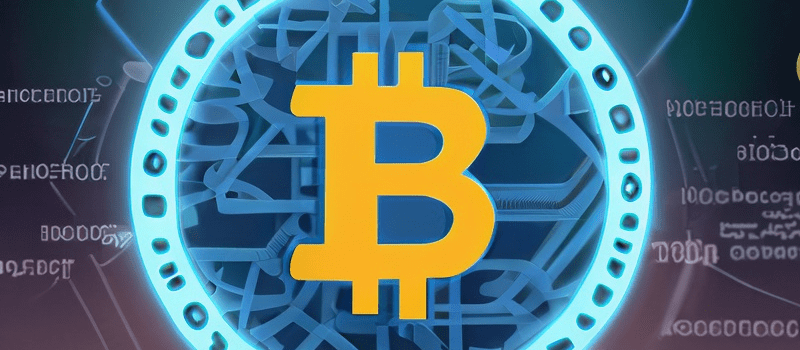Blockchain Transaction IDs: A Beginner’s Guide
A blockchain transaction ID (TXID) is a unique identifier that is automatically generated whenever a transaction occurs on a blockchain. TXIDs play a crucial role in the blockchain ecosystem.
Some key points about TXIDs:
- TXIDs are 64-character hexadecimal strings that allow you to identify specific transactions on a blockchain.
- Each TXID is completely unique – no two TXIDs will ever be the same.
- TXIDs are generated when the transaction is created, before it is broadcast to the network.
- All blockchain transactions have a TXID, including Bitcoin, Ethereum, Litecoin, and more.
For example, here is how a Bitcoin TXID looks:
0627052b6f28912f2703066a912ea577f2ce4da4caa5a5fbd8a57286c345c2f2
As stated on Blockchain.com:
“The TXID or Transaction ID is a unique
hashvalue that identifies a transaction on the network and allows it to be referenced.”
TXIDs enable you to:
- Lookup transactions on block explorers
- Verify payments and transaction status
- View transaction details (amount, date, wallet addresses etc)
- Prove ownership of transactions
- Trace the flow of transactions on the blockchain
In summary, TXIDs are a fundamental component of blockchains that enable transparency and key functionality. The rest of this article will examine TXIDs more in-depth.
Finding the Transaction ID
When a blockchain transaction takes place, the TXID is generated automatically. Here are some ways you can find the TXID for transactions:
On Block Explorers
Block explorers like Blockchain.com and Blockcypher allow you to easily search for a TXID by transaction amount, date, wallet address etc.
For example, Blockchain.com has a search bar that lets you lookup TXIDs:

In Wallets
Most wallet apps and exchanges provide the TXID in the transaction history/details section.
For example, in Coinbase you can click on a transaction and view its details:

Similarly, hardware wallets like Ledger and Trezor display the TXID when you view transaction history.
Programmatically
You can also access a TXID programmatically by calling blockchain APIs. For example:
// Fetch TXID from a Bitcoin address
bitcoin.getAddressTxids(address);
// Fetch TXID from an Ethereum transaction
ethereum.getTransaction(txhash);
In summary, TXIDs are easily accessible through various interfaces connected to the blockchain. The key is knowing where to look!
Uses and Importance of the Transaction ID
TXIDs have several important uses that highlight their significance in blockchain transactions:
-
Lookup transactions: As mentioned earlier, you can lookup any transaction on the blockchain by searching for its TXID on a block explorer. This allows you to view transaction details.
-
Verify payments: You can verify if a payment has been sent correctly by checking if the TXID is on the blockchain.
“When you make a Bitcoin payment, the recipient needs to confirm that your transaction has been recorded on the blockchain. A transaction ID serves as proof that the transaction is valid” – Blockchain.com
-
Prevent double spending: TXIDs prevent the same coins from being spent twice on the network. Any attempt will just be rejected.
“The TXID helps prevent the double-spending problem in which a Bitcoin is spent twice by the same holder.” – Kraken
-
Transaction tracking: You can trace transactions through the blockchain by searching for the TXIDs. This helps identify the flow of transactions.
-
Proof of ownership: If you have the TXID, you can prove ownership of that transaction and the coins transferred.
In summary, TXIDs are a crucial mechanism that enables transparency and key functionality on any blockchain.
Transaction ID Format
The TXID is a unique 64 character hexadecimal string. Here is what each character represents:
-
64 characters: This length was chosen to prevent collision risks with smaller hashes.
-
Hexadecimal format: Hexadecimal characters 0-9 and A-F are used rather than standard base-10 numbers.
“TXIDs use letters A-F and numbers 0-9 making them base 16 (hexadecimal) rather than our normal base 10 numbers” – Learn Me a Bitcoin
-
Unique hash: The TXID is calculated by hashing the transaction details using SHA-256 cryptographic hashing.
“A TXID is calculated by hashing the transaction details using industry-standard cryptographic hashing algorithms – SHA-256 followed by RIPEMD-160” – Stilt
-
Transaction metadata: The hash includes metadata like recipient, sender, amount – ensuring each TXID is completely unique.
For example, here is the TXID of a Bitcoin transaction:
0627052b6f28912f2703066a912ea577f2ce4da4caa5a5fbd8a57286c345c2f2
And an Ethereum TXID:
0x1e2910a262b1008d0616a0beb24c1a491d78771baa54a33e66065e03b1f46bc1
The length and format aim to minimize risks like collisions while still maintaining a reasonable length.
Limitations and Risks
While TXIDs provide many benefits, there are some limitations and risks to be aware of:
-
Transaction linking: Since TXIDs are visible on block explorers, it could allow people to link transactions to wallets and entities if they collect enough data.
“TXIDs can potentially be used to link transactions and wallets together – reducing privacy” – Blockgeeks
-
Shorter hashes: Some blockchains use shorter TXIDs which have a higher probability of collisions. This could result in double spending if not handled properly.
“Shorter TXIDs come with the risk that two identical TXIDs are generated, known as a collision. This could enable double spending” – Bitcoin Magazine
-
Exposing TXIDs: Publicly posting or sharing TXIDs could allow others to view your transaction details and associated wallets.
Overall, the risks primarily impact privacy rather than security. Users should avoid sharing TXIDs unnecessarily and use caution analyzing exposed TXIDs.
Other Transaction Identifiers
While TXID is the main transaction identifier, there are some other IDs that are useful on blockchains:
-
Block height: The block height indicates the number of blocks preceding a given block on the blockchain. It can be used to identify a transaction’s location on the chain.
“Block height identifies the sequential location of a block on the blockchain” – Bitdegree
-
Block hash: The block hash is like a digital fingerprint that identifies a block and all its transactions.
“Block hashes allow you to identify specific blocks and blocks that contain a specific transaction” – Coinmarketcap
-
Nonce: The nonce is a counter that tracks the number of transactions sent from a wallet address.
“A nonce is an abbreviation for ‘number only used once’ and refers to a counter for transactions sent from a wallet” – Gemini
| Identifier | Use Case |
|---|---|
| TXID | Unique transaction identifier |
| Block Height | Identify location on blockchain |
| Block Hash | Identify specific blocks |
| Nonce | Track transactions from a wallet |
While TXID remains the central transaction ID, these other identifiers also provide useful context.
Conclusion
In summary, transaction IDs (TXIDs) play a critical role in blockchains and cryptocurrencies.
Some key points:
- TXIDs are 64-character hashes that uniquely identify every transaction on a blockchain.
- They are automatically generated when a transaction is created.
- TXIDs can be used to lookup, verify, and track transactions.
- They help prevent double spending of coins.
- However, TXIDs can reveal information publicly if not handled properly.
Other identifiers like block height and block hash also provide useful on-chain transaction context.
Overall, TXIDs enable transparency on blockchains and are fundamental to how blockchains establish trust and legitimacy. As blockchain adoption increases, the importance of TXIDs will only continue growing as well.





Responses